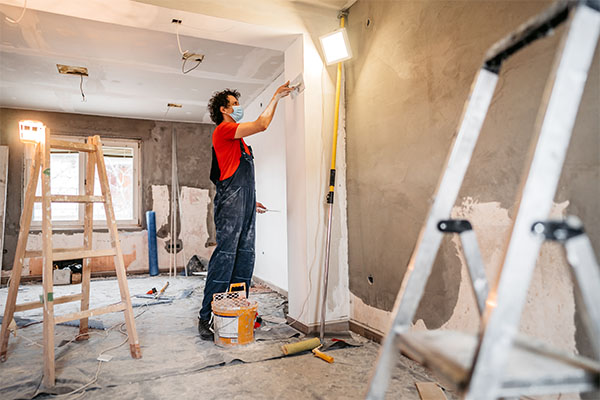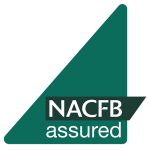A refurbishment mortgage is a type of finance that provides funds for the renovation or improvement of a property. It is typically used for homes that need significant repairs or updates, and the finance can be used to pay for the cost of labour and materials. The finance is secured against the property, and the borrower repays the finance plus interest over an agreed-upon term. The finance amount, interest rate, and repayment terms vary depending on the lender and the borrower’s credit rating.
Buying a property for refurbishment may provide healthy returns if done correctly. If you have found a suitable property as a ‘fixer-upper’, you may require a mortgage or bridging finance to help you on the way. Clever lending has years of experience in arranging this type of finance.
Table of Contents
How much can I borrow on a refurbishment property?
The amount you can borrow for a refurbishment mortgage will depend on several factors, including the value of the property, your credit rating, and the lender’s lending criteria. Typically, lenders will consider the projected value of the property after the renovations are complete and will lend a percentage of that amount, typically up to 75-80% of the renovated property value.
The exact amount you can borrow will depend on your financial situation and the lender’s lending criteria. It is advisable to speak with a financial advisor or lender to determine how much you can borrow.
How does a renovation mortgage work?
A renovation mortgage is a type of borrowing that provides financing for both the purchase or refinance of a property, and the cost of renovations or upgrades. Here is how a renovation mortgage typically works:
- Find a property. Whether you have found a property on your own terms, or have purchased from an auction, it’s the first step to renovating a property.
- Finance application: You also need to apply for a renovation mortgage. This typically involves filling out a mortgage application, providing proof of income and employment, and obtaining a valuation of the property. This is a good time to speak to a mortgage adviser that understands all the process of a renovation mortgage and can advise the best way to move forward and help find a lender.
- Approval and finance terms: If approved, the lender will provide you with the finance amount, the interest rate, and the finance terms. The finance terms will typically include information about the length of the finance, the repayment schedule, and any fees or charges associated with the finance.
- Renovation funds distribution: After the finance has been approved; the lender will distribute the funds for the renovations. The funds may be released in stages, based on the completion of certain milestones or as the renovations progress.
- Renovations: Once the funds have been released, the renovations can begin. During this time, the lender may require progress inspections to ensure that the renovations are progressing according to plan.
- On completion of renovation: Depending on the type of renovation finance you have, you may need to refinance your project into a standard mortgage once the renovations are complete and the value of your property has hopefully increased.
Light refurbishment finance
Light refurbishment finance is a type of finance or financing that provides funds for minor renovations or updates to a property. This can include things like painting, flooring, or cosmetic updates.
Light refurbishment finance typically provides a smaller finance amount than a full refurbishment mortgage, as the renovations are less extensive. The finance amount, interest rate, and repayment terms will depend on the lender and the borrower’s credit rating.
Heavy refurbishment mortgage
Heavy refurbishment finance is a type of finance or financing that provides funds for extensive renovations or updates to a property. This can include things like structural changes, additions, or major updates to the electrical, plumbing, roof, extensions etc. Heavy refurbishment finance typically provides a larger finance amount than light refurbishment finance, as the renovations are more extensive and expensive.
Examples of heavy refurbishment in a property include:
- Structural changes, such as adding or removing walls, changing the layout, or building an extension.
- Major updates to the electrical, plumbing, rewiring, replacing pipes, or installing a new heating and cooling system.
- New roof, windows, or doors.
- Major updates to the kitchen or bathroom, such as a full gut and remodel.
- Adding or updating insulation, drywall, or flooring.
- Landscaping or outdoor improvements, such as adding a deck, patio, or garden.
- Installing new technology or energy efficient systems, such as solar panels or smart home systems.
Clever Lending can help you with this process by advising the most appropriate route to take, the lender to go to and the product you need. Clever Lending will process the application and we will approach the lenders matching your criteria.
How to get a mortgage on a renovation property
Getting a mortgage on a renovation property involves applying for a finance for the cost of the purchase and renovations or updates to the property. Here are the steps to follow:
- Determine the cost of the renovations: Create a budget for the renovations, taking into account the cost of the property purchase, labour and materials.
- Research lenders: Speak to a finance broker like Clever Lending who has experience.
- Get pre-approved: To get a sense of what you can afford, get pre-approved for a mortgage. This will give you an idea of how much you can borrow and what your monthly payments will be.
- Hire a contractor: Hire a reputable contractor to complete the renovations.
It is important to note that getting a mortgage for a renovation property can be more complex than getting a mortgage for a property that is already in good condition. Lenders will want to ensure that the property will have sufficient value after the renovations are complete to secure the finance. A detailed renovation plan and budget can help you secure a finance for a renovation property.
Speak to a specialist finance broker for help with this.
Extra considerations with a refurbishment mortgage
When getting a refurbishment mortgage, here are some additional considerations to keep in mind:
- Valuation: The lender will want to value the property to determine its value after the renovations are complete. The valuation will play a key role in determining the finance amount.
- Contractor selection: Choose a reputable contractor with a good track record to complete the renovations. A lender may require proof of insurance, licensing, and deposit before approving a finance.
- Timing: Renovations can take longer than expected, so consider the impact on your finances if the project takes longer than planned.
- Budget: Stick to the budget you’ve created to ensure the project stays on track and you don’t run out of funds.
- Insurance: Ensure that you have proper insurance coverage in place during the renovation process.
- Finance terms: Consider the finance terms, including the interest rate, finance amount, and repayment period, and make sure they are favourable to you.
- Final Inspection: Hire a professional inspector to value the property after the renovations are complete to ensure that all work has been completed to code and to identify any potential issues.
By keeping these considerations in mind, you can help ensure that your renovation project goes smoothly and you get the best possible outcome from your renovation mortgage.
Can I use a conventional mortgage to buy a doer-upper?
It’s possible and many people take this option if the property they want to buy needs repairs but is in a habitable condition.
It’s important to note that you may need to provide a larger deposit for a conventional mortgage on a fixer-upper, as the lender will want to ensure that there is enough equity in the property to secure the finance. Additionally, the interest rate and terms of a conventional mortgage for a doer-upper may be higher than a traditional mortgage, as the finance is riskier for the lender.

Do you need finance for your refurbishment project?
Call and speak to one of our specialist brokers on 0800 316 2224
How much deposit will I need for a mortgage to renovate a house?
The deposit required for a mortgage to renovate a house will depend on several factors, including the type of mortgage you are obtaining, the value of the property, and your credit score. Generally, the deposit required will be higher for a mortgage to renovate a house compared to a traditional mortgage for a move-in ready property. Typical deposit payment of 5-20% of the purchase price of the property, but the exact amount will depend on your credit score, income, affordability, and other factors.
Do I need a good credit score to get a renovation mortgage?
Not always, some lenders require you to have a good credit score, but there are options for people with a less than perfect score.
The exact credit score required for a renovation mortgage will vary depending on the type of finance and the lender.
Having a good credit score can help you get better interest rates and finance terms, which can save you money in the long run. However, even if your credit score is not perfect, there may still be options available to you.
It’s a good idea to check your credit score and credit report before applying for a renovation mortgage, as this will give you an idea of where you stand and what you need to do to improve your chances of approval.
You can get a free credit report from each of the three major credit bureaus: Equifax, Experian, and TransUnion. Or we can do a free credit score check for you and give you options.
Will a renovation mortgage cost more than a standard mortgage?
A renovation mortgage can cost more than a standard mortgage, but the exact cost will depend on several factors, including the type of finance, the interest rate, the finance terms, and the amount being borrowed.
Here are some factors that can impact the cost of a renovation mortgage:
- Interest rate: Renovation mortgages may have higher interest rates compared to traditional mortgages, as the finance is considered riskier for the lender due to the cost of renovations.
- Finance terms: The finance terms for a renovation mortgage may be shorter than a traditional mortgage, which can result in higher monthly payments.
- Finance fees: Some renovation finances may come with additional fees, such as appraisal fees, inspection fees, and processing fees.
- Finance amount: The amount being borrowed can also impact the cost of a renovation mortgage. Larger finances may come with higher interest rates and fees.
It’s important to carefully consider the cost of a renovation mortgage, as well as the finance terms and interest rate, before applying for a finance. Comparing offers from multiple lenders can help you find the best mortgage option for your needs.
Overall, while a renovation mortgage can cost more than a standard mortgage, it can also provide you with the funds you need to make important renovations to your property, which can increase its value and make it more liveable.
What kind of properties qualify for a renovation mortgage?
Properties that qualify for a renovation mortgage are typically those that need significant repairs, upgrades, or renovations in order to be liveable or functional.
Here are some types of properties that may qualify for a renovation mortgage:
- Single family homes: A single family home in need of repairs or upgrades can qualify for a renovation mortgage.
- Multi-unit properties: Multi-unit properties, such as flats or apartments, that need renovations can also qualify for a renovation mortgage.
- Investment properties: Investment properties, such as rental properties, that need renovations can also be eligible for a renovation mortgage.
- Historic properties: Properties with historic significance, such as those listed on the National Register of Historic Places, that need renovations can also qualify for a renovation mortgage.
The exact requirements for a renovation mortgage will vary depending on the lender and the type of finance, but most lenders will require a valuation of the property to determine its value and the cost of renovations.
Can a first-time buyer get a renovation mortgage?
Yes, first-time buyers can get a renovation mortgage. However, the requirements for a renovation mortgage may be different for first-time buyers compared to those who have previously owned a home.
First-time buyers will typically need to meet certain income and credit requirements, as well as have a deposit saved, in order to qualify for a renovation mortgage. Some renovation finances may have more lenient requirements for first-time buyers, including lower credit score and deposit requirements.
It’s important to note that while a renovation mortgage can be a good option for first-time buyers who want to purchase a property that needs renovations, it can also be a more complex and expensive finance compared to a standard mortgage.
Before applying for a renovation mortgage, first-time buyers should carefully consider their budget, their renovation goals, and their long-term financial plans.
What happens when the renovation is complete?
When the renovation is complete, several things may happen depending on the type of renovation mortgage you have:
- Refinance: In some cases, you may need to refinance your renovation mortgage into a standard mortgage. This typically happens when you have completed the renovations and the value of your property has increased, making it eligible for a traditional mortgage.
- Finance repayment: If you have a finance with a defined term, such as a personal finance, the finance will need to be repaid at the end of the term, along with any interest and fees.
- Sell the property. You might choose to sell the property and take the profit to invest again
- Rent the property. You could always rent the property out, however you will need a buy to let mortgage
Regardless of the type of renovation mortgage you have, it’s important to keep detailed records of your renovation expenses, including receipts and invoices, to ensure that you can provide proof of the renovations if needed. This can be helpful when it comes time to refinance your mortgage or sell your property in the future.
Overall, completing a renovation is an exciting time, and the end result can be a beautiful and functional property that increases in value and provides you with a comfortable living space.
Do you need finance for your refurbishment project?
Or call and speak to one of our specialist brokers on 0800 316 2224




















